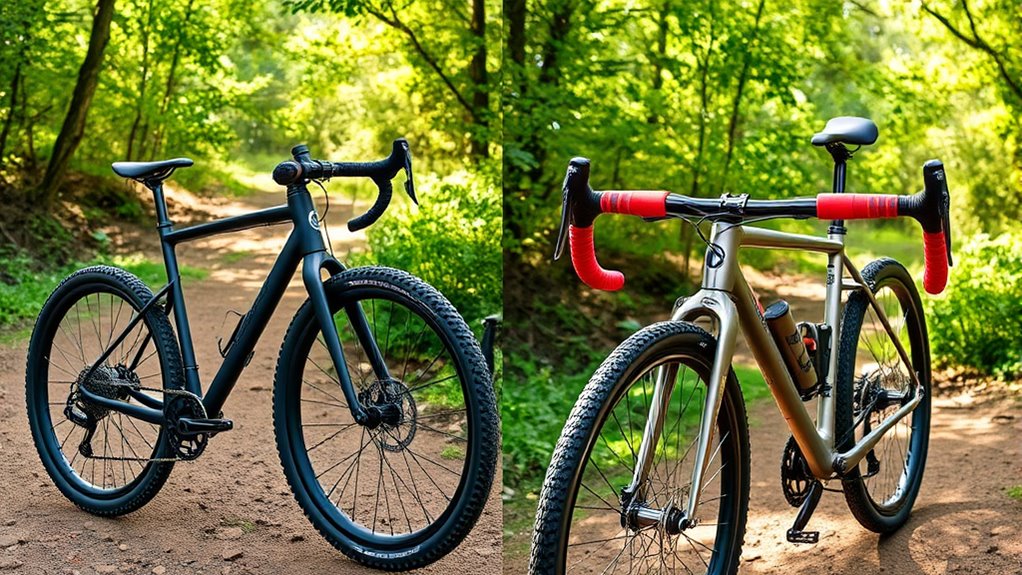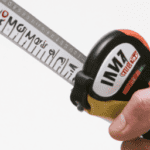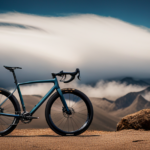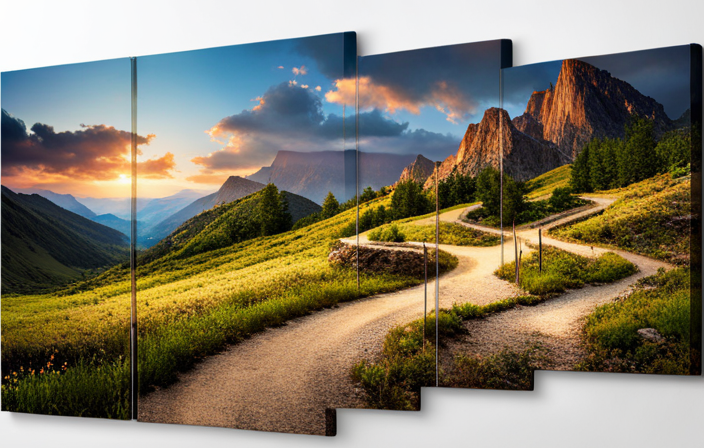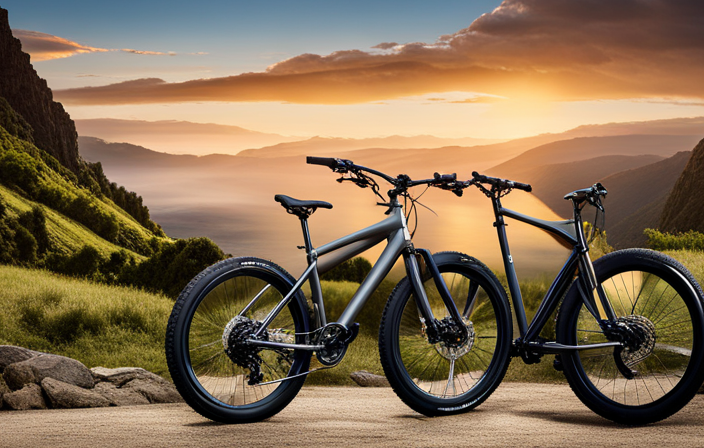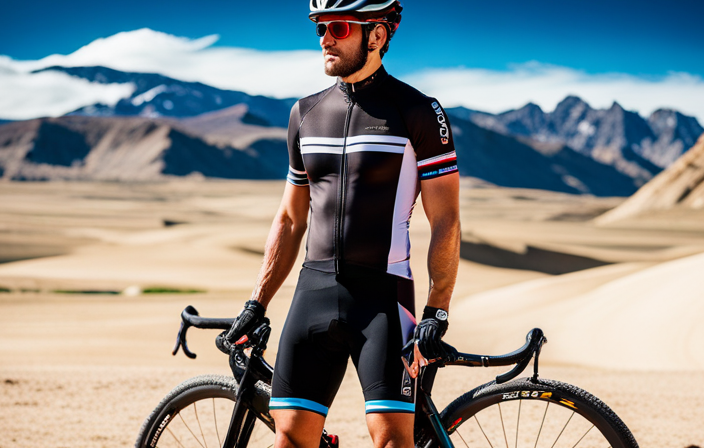Choosing between flat bar and drop bar gravel bikes depends on your riding style and terrain. Flat bars offer a modern look, easy customization, and a relaxed, upright posture perfect for casual or technical rides. Drop bars focus on aerodynamics, speed, and long-distance comfort with multiple hand positions. If you want to explore more about how each setup fits different riding goals, you’ll find plenty of helpful insights ahead.
Key Takeaways
- Flat bars provide a relaxed, upright riding position ideal for casual and urban riding, while drop bars support aerodynamic, long-distance comfort.
- Drop bars enhance speed and efficiency with multiple hand positions, suitable for competitive riding and extended gravel tours.
- Flat bars are easier to customize with accessories and generally require less maintenance, making them more versatile for different terrains.
- Drop bars offer better control on rough terrain and technical sections due to improved leverage and handling.
- The choice depends on riding style: flat bars favor comfort and city riding, while drop bars prioritize speed and endurance.
Overview of Flat Bar and Drop Bar Designs

When choosing between flat bar and drop bar designs for gravel bikes, understanding their core differences is essential. Flat bars offer a straightforward, modern look that appeals to riders seeking simplicity and a clean aesthetic appeal. They originated from mountain bikes and have gained popularity for their practical, ergonomic shape. Drop bars, on the other hand, have a rich historical evolution, tracing back to road racing bikes. Their curved design provides multiple hand positions, enhancing versatility. Visually, drop bars lend a classic, sporty vibe, while flat bars deliver a minimalist, utilitarian appearance. Additionally, considering ergonomic design can help determine which bar style offers better comfort for your riding style and preferences. Knowing these fundamental distinctions helps you decide which style aligns best with your riding style and visual preferences, setting the foundation for a more informed choice.
Comfort and Ergonomics on Gravel Routes
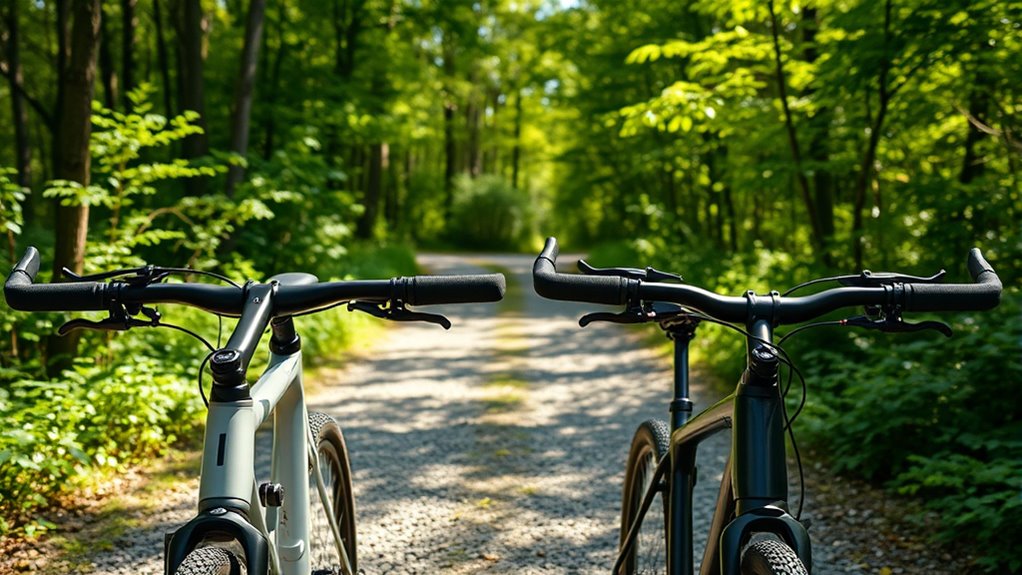
Your hand positions and riding posture considerably impact comfort on gravel routes. Flat bars often keep your hands in a natural position, reducing fatigue, while drop bars offer multiple grip options for longer rides. Considering how these factors influence your control and comfort can help you choose the bike that best fits your gravel adventures. Additionally, selecting a handlebar style that aligns with your preferred riding posture can enhance your overall experience by providing optimal ergonomics and comfort. Understanding the cookie categories that affect your browsing experience can also help you customize your online shopping for gravel bikes, ensuring you access the information and deals you need without compromising your privacy. Being aware of how Bitcoin IRA strategies manage volatile assets can similarly inform your decision-making process when choosing the right bike setup for different terrains. Moreover, paying attention to handlebar ergonomics can lead to improved riding efficiency and reduced strain during extended rides.
Hand Positions and Control
Choosing the right hand positions on your gravel bike is essential for maintaining comfort and control over extended rides. Your grip and handlebar accessories influence how securely and comfortably you hold the bars. Consider these options:
- Vary your hand positions to reduce fatigue.
- Use handlebar accessories like bar ends or tape for better grip options.
- Select grip materials that suit your riding conditions—rubber, foam, or cork for comfort.
- Adjust your grip pressure to avoid numbness or soreness.
- Be mindful of dog-friendly policies in your riding areas, especially if you’re exploring parks or trails that welcome pets, to ensure a comfortable experience for both you and your canine companions.
Riding Posture and Comfort
Maintaining proper riding posture on gravel routes helps you stay comfortable and reduce fatigue over long distances. Your handlebar choice influences your posture and overall comfort, especially with different handlebar materials and grip options. Flat bars offer a more upright position, which can be easier on your back and neck, while drop bars encourage a more aerodynamic posture that may cause some strain if not set up correctly. The handlebar materials, such as aluminum or carbon, affect vibration dampening and overall comfort, especially on rough terrain. Grip options also matter—rubber grips, foam, or ergonomic designs help reduce hand fatigue and improve control. Selecting the right handlebar setup ensures you maintain a natural, relaxed posture, making long gravel rides more enjoyable and less tiring, and paying attention to ergonomic design can further enhance comfort during extended rides. Additionally, considering vibration dampening features can significantly improve comfort by minimizing the impact transmitted from rough surfaces. Incorporating shock absorption technologies into your bike setup can also help diminish the effects of rough terrain, making your ride smoother and more comfortable. Moreover, choosing handlebars with appropriate width and reach can optimize control and reduce strain during prolonged rides.
Handling and Maneuverability in Different Terrains

Handling and maneuverability vary considerably between flat bar and drop bar gravel bikes, especially across different terrains. Flat bars offer quick steering, making them ideal for technical sections or tight turns. Drop bars, however, provide more control over longer stretches, especially on rough terrain. Consider these factors:
Flat bars offer quick steering for tight turns, while drop bars provide better control on rough terrain.
- Rear tire grip impacts stability; wider tires improve traction on loose surfaces.
- Brake setup influences braking power and modulation, vital for tricky descents.
- Flat bars excel in tight corners and technical rides due to their responsive steering.
- Drop bars allow for better leverage and control over uneven terrain by adjusting hand positions.
- Contrast ratio in the bike’s components can affect visibility and safety in varying lighting conditions, especially during dawn or dusk rides. Additionally, the overall ergonomics of each handlebar type can influence rider comfort during extended rides, affecting handling and control.
Riding Position and Aerodynamics
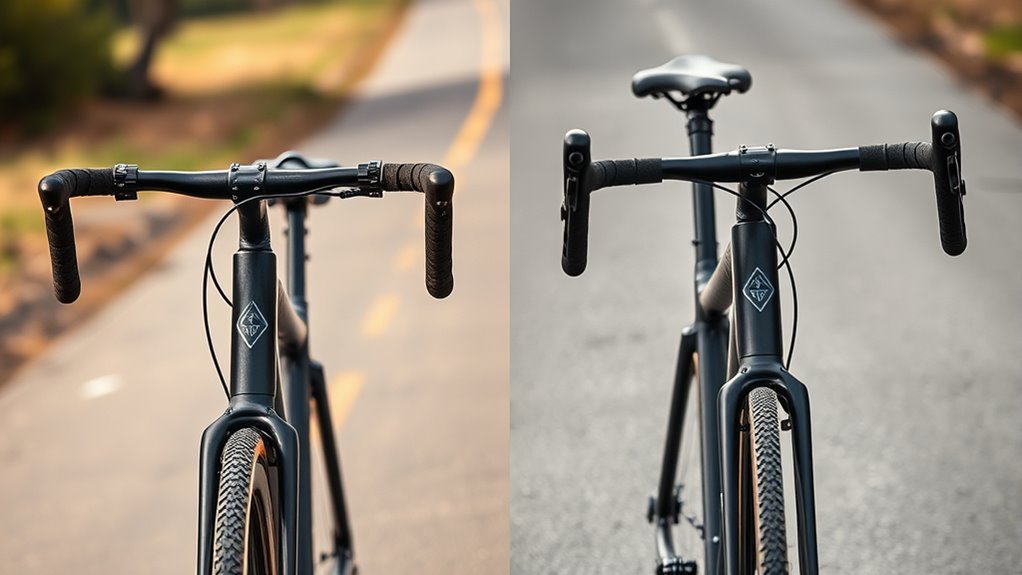
Your riding position greatly influences both comfort and how efficiently you cut through the air. Drop bars tend to put you in a more aerodynamic stance, boosting speed on open roads, but may feel less relaxed over long rides. Flat bars offer a more upright posture, prioritizing comfort but potentially sacrificing some airflow and speed. Additionally, understanding the aura colors associated with different emotional and physical states can help cyclists tune into their own energy and well-being during rides. Recognizing how tuning modifications can optimize performance allows cyclists to adapt their riding style to various terrains and personal preferences, enhancing overall experience. Incorporating ergonomic handlebar setups can further improve comfort and efficiency, especially during extended rides, and customized handlebar geometries are important for achieving the ideal riding position.
Comfort and Posture
Choosing between a flat bar and a drop bar gravel bike substantially impacts your comfort and riding posture. Flat bars offer a more upright position, reducing strain on your back and neck, which can enhance overall comfort. Drop bars, with their historical origins, promote a more aerodynamic stance but may cause discomfort during long rides. Consider these points:
- Flat bars provide a natural, relaxed posture, ideal for casual riding.
- Drop bars allow multiple hand positions, aiding in comfort over varied terrain.
- Flat bars tend to have a modern aesthetic appeal, contrasting with the classic look of drop bars.
- Your preferred riding style influences which posture feels better, affecting long-term comfort and enjoyment.
- Participating in virtual hackathons can foster innovative ideas for designing ergonomic bike components that enhance rider comfort and posture.
Ultimately, your choice shapes how you experience your ride’s comfort and posture.
Airflow and Speed
The riding position considerably influences airflow and speed on a gravel bike, with drop bars naturally promoting a more aerodynamic stance. When you lean forward, you reduce aerodynamic drag and cut through wind resistance more efficiently. This position allows your body to streamline, minimizing exposed surfaces that catch the wind. In contrast, flat bars often encourage a more upright posture, increasing wind resistance and slowing you down. If you’re aiming for maximum speed on open gravel roads, adopting a drop bar position helps you stay aerodynamic and conserve energy. Even small adjustments to your riding posture can markedly impact your overall speed, especially when facing headwinds or riding long distances. Ultimately, your position directly affects how smoothly you move through the air. Proper bike tuning and setup can further enhance your aerodynamics and riding efficiency.
Versatility and Compatibility With Accessories

Flat bar gravel bikes often excel in versatility because their straightforward design allows for easy customization with a wide range of accessories. You can quickly add handlebar accessories like lights, GPS mounts, or additional grips without compatibility concerns. When considering bar compatibility, flat bars generally support a variety of handlebar types, making upgrades simple. Additionally, the user-friendly interfaces of many accessories make installation and adjustments more straightforward, enhancing the overall riding experience. Furthermore, the versatility of handlebar options makes flat bar bikes adaptable to different riding styles and preferences. Here are some key points:
- Handlebar accessories are easy to attach, enhancing comfort and utility.
- Flat bars accommodate various handlebar sizes and shapes, boosting compatibility.
- Accessories like racks or fenders can be installed without complex modifications.
- The simplicity of flat bar designs makes it easier to swap components or add new features.
This flexibility makes flat bar gravel bikes ideal for riders seeking customization options.
Weight and Aerodynamic Efficiency
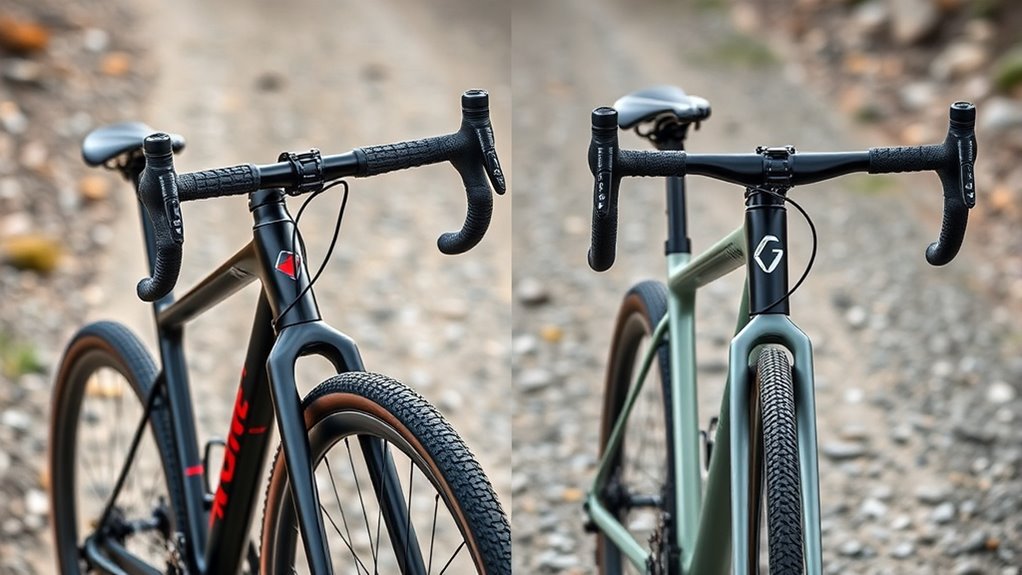
When it comes to weight and aerodynamic efficiency, drop bar gravel bikes generally have the edge due to their streamlined design. The handlebar customization options on drop bars allow you to adopt a more aerodynamic riding position, reducing drag. Additionally, the material weight of drop bar frames often favors lighter options like carbon fiber or lightweight aluminum, helping you climb hills more easily and accelerate faster. Flat bars tend to be bulkier and heavier, with less scope for aerodynamics, making them less efficient at cutting through the air. If minimizing weight and maximizing aerodynamic gains are priorities, drop bar gravel bikes offer a clear advantage. Their design encourages a more aerodynamic posture, and the ability to choose lighter materials enhances overall efficiency. Practicing stillness can further improve your focus and riding technique, allowing you to better utilize these aerodynamic benefits.
Maintenance and Durability Considerations

Maintaining a gravel bike requires attention to different components depending on whether it has flat or drop bars. Your focus should be on frame material and brake compatibility, which influence durability and ease of maintenance.
- Check the frame material regularly; carbon frames are lightweight but can crack, while aluminum frames are more durable but prone to dents.
- Inspect brake compatibility—flat bars often use disc brakes, which need consistent pad and rotor checks, while drop bars may also support rim brakes.
- Keep components clean and lubricated to prevent corrosion and wear, especially in harsh conditions.
- Be aware of cheating behaviors that can impact rider trust and safety, especially in competitive settings or group rides.
- Regularly review your maintenance schedule to ensure all components perform optimally and extend the lifespan of your bike.
- Staying informed about recent advancements in bike technology can help you select the best components for durability and performance.
This approach guarantees your gravel bike stays reliable and durable over time.
Which Bar Type Suits Different Rider Styles and Goals
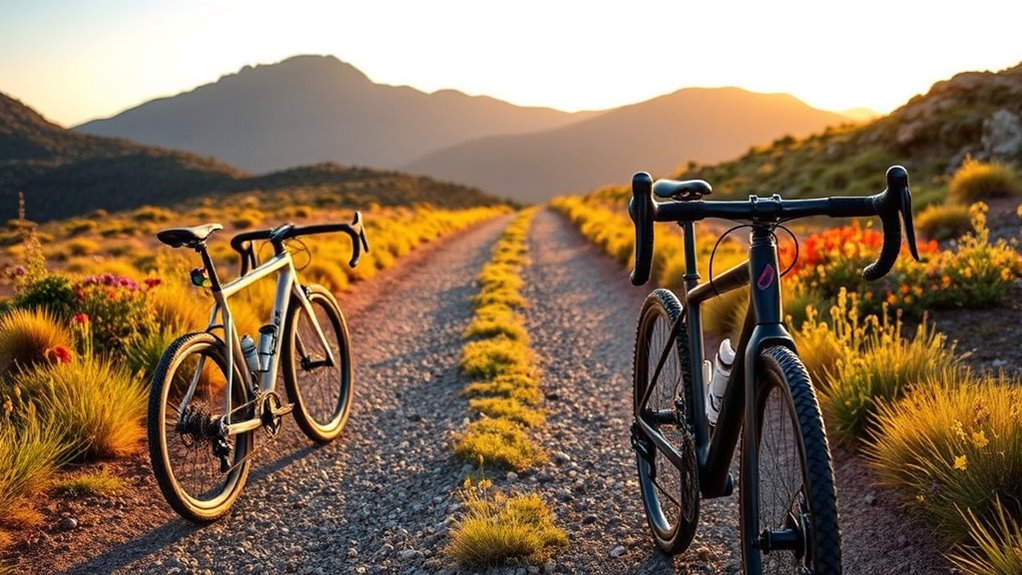
Choosing the right handlebar type depends largely on your riding style and personal goals. If you prefer comfort and relaxed riding, a flat bar offers a more upright position, making cycling fashion casual and practical. It’s ideal for city commuting or quick errands, where bike storage options often include simple racks or baskets. On the other hand, if you aim for long-distance riding or racing, drop bars provide more aerodynamic positioning, boosting speed and efficiency. They suit riders focused on performance and endurance. Your bike’s style and accessories also matter—drop bars often complement sleek, performance-oriented setups, while flat bars match versatile, everyday bikes. Knowing your goals helps you choose the handlebar that aligns with your cycling fashion sense and storage needs.
Conclusion
Choosing between flat and drop bars isn’t just a decision—it’s your ticket to conquering every gravel challenge like a legend. Flat bars will make you feel unstoppable on tight turns, while drop bars turn you into a speed demon slicing through the wind. Whichever you pick, it’s your ride, your rules, and your adventure. Gear up, choose wisely, and get ready to dominate every gravel trail like a true champion!
